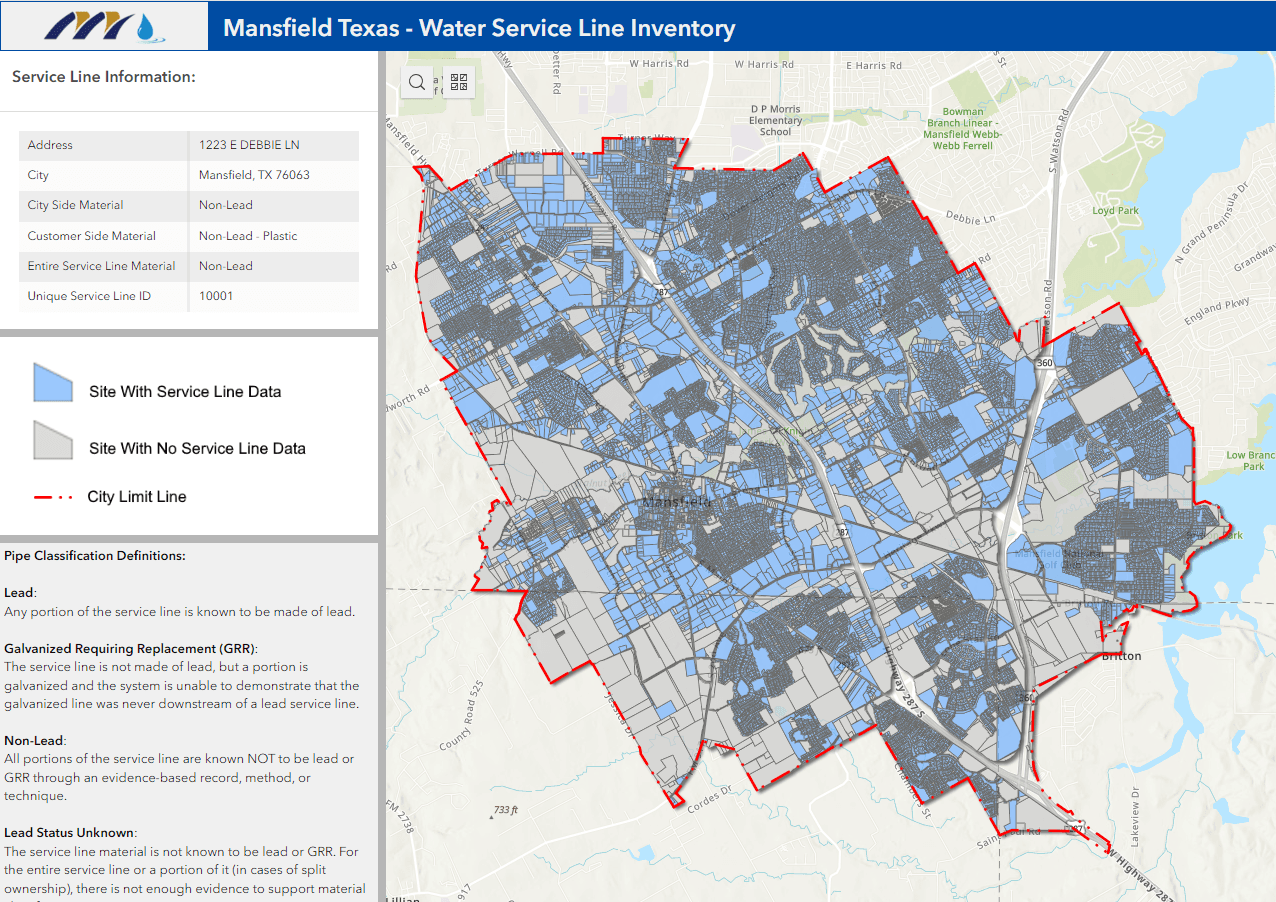Mansfield’s Lead and Copper Testing Program
Lead typically enters drinking water due to the corrosion of materials containing lead or copper in service lines and household plumbing. This can include lead-based solder, brass or chrome-plated faucets, and sometimes lead pipes connecting homes to water lines.
At the Bud Ervin Water Treatment Plant, water is testes triennially to ensure it doesn’t contain lead. These tests consistently show no detectable levels of lead in the water leaving the plant.
The Environmental Protection Agency (EPA) introduced the Lead and Copper Rule in 1991. In Texas, water sampling, including lead and copper testing, is regulated by the Texas Commission on Environmental Quality (TCEQ). Mansfield has been on a reduced monitoring schedule since the late 1990’s, thanks to consistently low or undetectable lead levels.
Mansfield Water Utilities (MWU) adjusts its water treatment process to make water less corrosive, minimizing the risk of lead leaching from pipes. The most recent lead and copper tests in 2024 showed undetectable or very low lead levels, well below the EPA’s action level of 15 parts per billion (ppb).
Customers can reduce exposure to lead by running cold water from the tap before use, especially after periods of inactivity like overnight or returning from vacation.
Why is lead and copper testing done?
Testing ensures MWU’s treatment methods effectively minimize water corrosiveness, reducing the risk of lead or copper leaching into drinking water
What is water corrosiveness?
Water naturally corrodes metals over time. Our treatment facility adjusts the water’s pH and by adding sodium hydroxide to reduce corrosion, thus minimizing the potential for lead or copper contamination.
Where does lead and copper in drinking water come from?
While reservoirs naturally contain trace amounts of lead and copper, the primary risk is from leaching in household plumbing when water isn’t properly treated to reduce its corrosiveness.
Does my home contain lead or copper?
Most homes built in the last 50 years used copper pipes, often joined with lead-based solder. Brass faucets also contain lead. However, Mansfield homes likely don’t have lead piping.
How can I protect my household from lead and copper exposure?
Running the water until it’s noticeably cooler before using it for drinking or cooking helps flush out any lead or copper that may have leached from pipes.
How is Mansfield’s water tested?
MWU follows EPA protocols, which involve testing “first draw” water after it has sat in pipes for at least six hours. Samples are taken in summer months when water is more corrosive.
How many samples are tested?
MWU initially tested 60 samples, but due to excellent results, the frequency has been reduced to every three years with 30 samples required.
Who collects and analyzes the samples?
Homeowners collect the samples under MWU’s guidance, and TCEQ-approved laboratories analyze them.
Where can I access the test results?
Test results are published in the annual Consumer Confidence Report (CCR), and TCEQ’s Drinking Water Watch.
Can I test my home for lead and copper?
Yes, private labs offer testing services for a fee. If you home is selected as a sample site, you will receive the test results
What are the Action Levels for lead and copper?
The Action Level (AL) for lead is 15 ppb, and for copper, it’s 1.3 ppm. If these levels are exceeded, utilities must take steps to reduce water corrosiveness. Fortunately, Mansfield has consistently met these standards.
EPA’s Lead and Copper Rule Revision
Over the years, federal and state regulations have helped decrease lead levels in the environment, reducing the risks of lead exposure. On January 15, 2021, the EPA introduced the Lead and Copper Rule Revisions (LCRR). One key aspect of the LCRR is that all public water systems must submit an initial Service Line Inventory by Oct. 16, 2024, and provide updates regularly over the next decade until the inventory is complete
As part of this process, MWU has reviewed a wide range of existing documentation, including plumbing codes, permits, historical capital improvement plans, distribution system maps, inspections, and other water system records to determine the material makeup of service line connections. The inventory will cover both public and private service lines connected to the water distribution system, and each will be categorized by its material.
What is a service line?
A service line links the water main to a home or a business. It consists of three sections:
- The public side – maintained by the utility
- The meter – also maintained by the utility
- The private side – the property owner’s responsibility
Property owners are accountable for maintaining the private side of the service line, including replacing any lead plumbing within their premises, and on their property extending from the meter.
Mansfield’s Water Service Line Inventory
Click HERE for the city’s current service line inventory.

